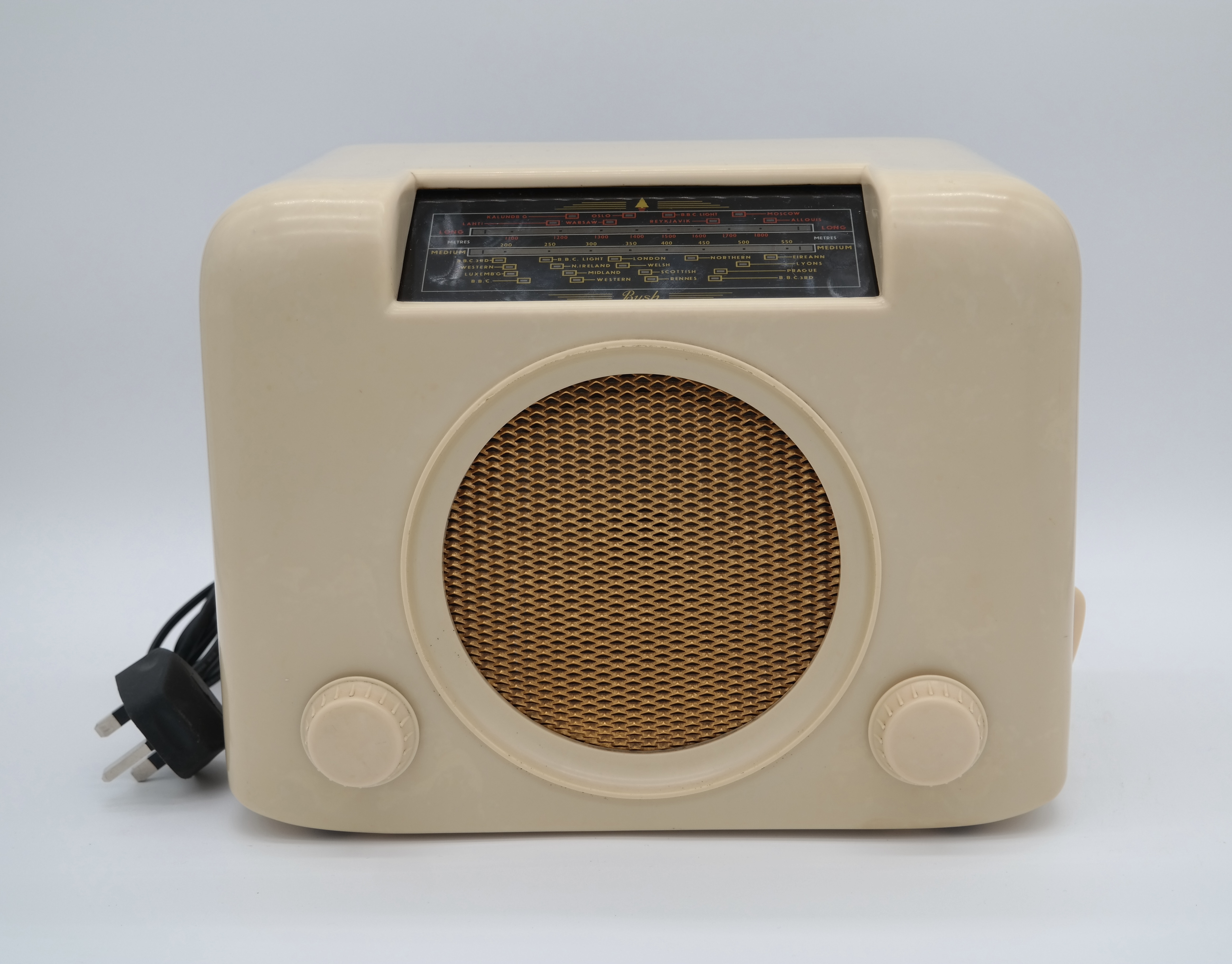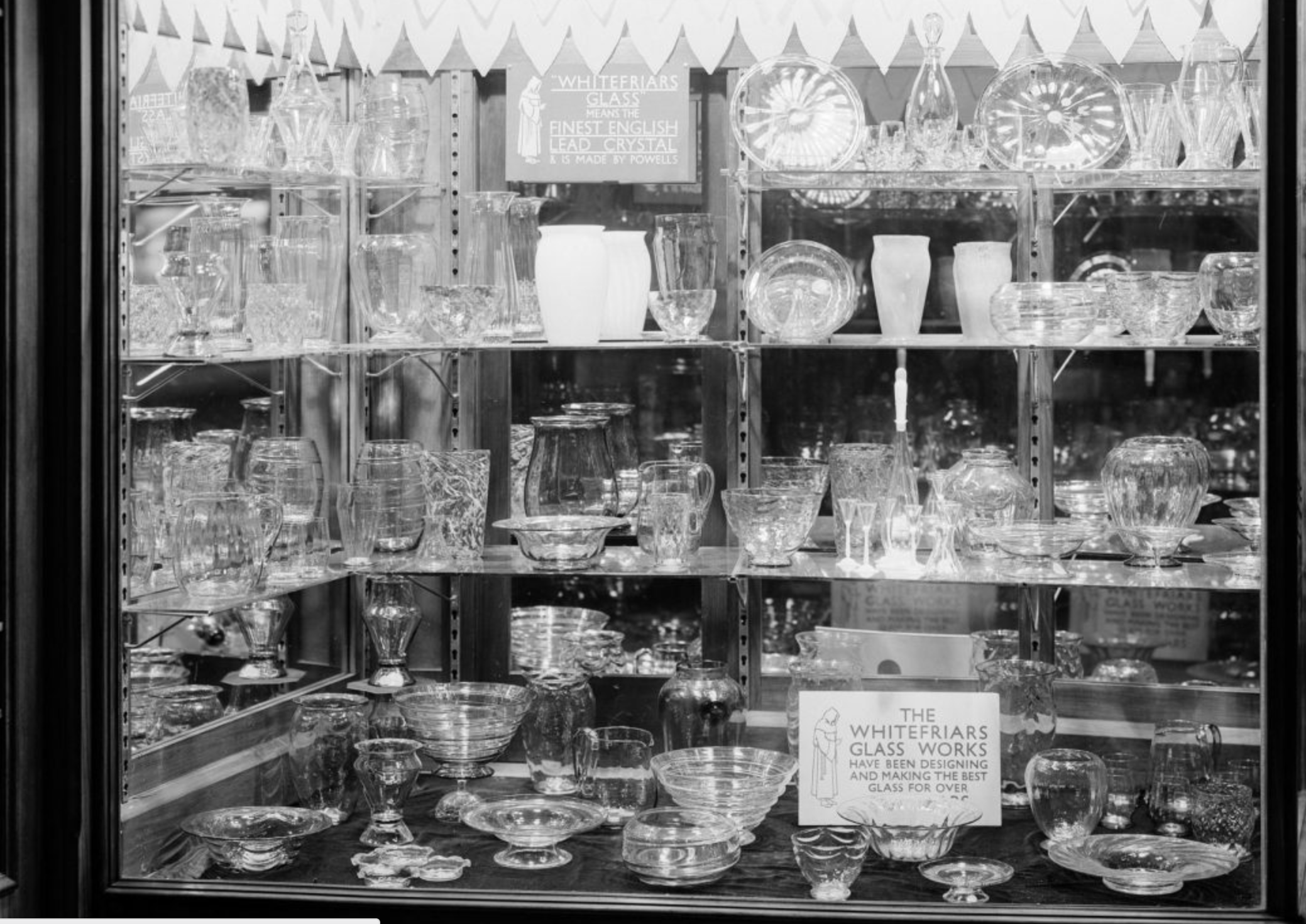The Blaby Blog
Welcome to the Blaby Antiques Blog
On this page you will find weekly updates and stories surrounding items in the centre, as well as information on certain areas of interest from collectors.
Our second blog post is by John Woolman, giving a brief outline on collecting vintage radios. 9/4/2025
The Allure of Vintage Radios: A Journey Through Time (1920s - 1980s)
Collecting vintage radios is not just a hobby; it’s a passionate journey through the fascinating evolution of technology, design, and culture from the 1920s to the 1980s. These delightful artifacts tell stories of the past and connect us with a time when radio was the primary source of entertainment and information. Here, we explore the appeal of these treasures and tips for starting your own collection.
The Golden Age of Radio (1920s-1940s)
The 1920s marked the birth of commercial radio broadcasting. Early radios, often made of wood with ornate designs, are prized collectibles. Highlights include:
The Silvertone 1920s: With its unique design and sound quality, this radio embodies the era's spirit.
Philco 1930s Models: Known for their innovation, these radios often feature intricate woodwork and charm.
As radio became a staple in households during the 1930s and 1940s, models started to become more practical. Collectors appreciate the historic significance and craftsmanship of these pieces, reflecting the Art Deco and Streamline Moderne styles of the time.
The Post-War Era (1950s-1960s)
The post-war period brought a surge in radio production with advancements in technology and aesthetics. The introduction of portable radios made it easier for people to enjoy music and news on the go.
Transistor Radios: Compact and lightweight, transistor radios opened up a new world of broadcasting, reaching a younger audience.
Mid-Century Modern Designs: Brands like RCA and Zenith merged functionality with style, producing sleek designs that are highly sought after today.
The 1950s and 60s were an exciting time for radio, with the rise of rock ‘n’ roll and the cultural changes of the era, making these radios nostalgic pieces of history.
The Transition to the Digital Age (1970s-1980s)
By the 1970s and 80s, radios began to evolve with the introduction of features like FM stereo and cassette players, embracing the changing musical landscape.
Boomboxes: These portable wonders of the 1980s epitomised street culture and are cherished for their role in the music revolution.
Space Age Designs: Models with unique shapes and vibrant colours represented the innovative spirit of the time.
Collecting radios from this era is not just about the device itself, but also about the music and cultural shifts that they represent.
Tips for Collecting Vintage Radios
Research & Education: Learn about different brands, models, and trends. Resources like collector clubs, online forums, and vintage radio shows can provide valuable insights.
Condition Matters: When purchasing, consider the condition of the radio. Some collectors prefer restoration projects, while others seek models in pristine condition.
Network with Other Collectors: Join online communities or local clubs to connect with fellow enthusiasts. They can provide tips, trade opportunities, and support.
Preservation: Learn how to care for and restore your vintage radios to maintain their value and functionality.
The Magic of Collecting Vintage Radios
The joy of collecting vintage radios lies in their rich history and the nostalgia they evoke. Each radio has its unique story, embedded in the culture and technology of its time. Whether you’re drawn to the craftsmanship of the 1920s or the style of the 1980s, embarking on this collecting journey can be incredibly rewarding. So tune in to the past, and let these vintage pieces spark your imagination!

For the first blog post "Haybarn" has uploaded a piece written surrounding the Whitefriars glass factory, its origin and works. 22/03/2025
Exploring Whitefriars Glass: A Legacy of Craftsmanship and Innovation
Whitefriars Glass, one of the most iconic names in the world of glassmaking, has long been recognized for its exceptional craftsmanship, innovation, and rich history. Established in 1834, Whitefriars is synonymous with the creation of some of the finest glassware in the UK, producing everything from everyday functional glass to intricate decorative pieces.
The Origins of Whitefriars Glass
The company’s story began in 1834 when it was founded as the ‘London and St. Helens Glassworks’ by James Powell. After being renamed Whitefriars in 1845, the company became one of the foremost producers of luxury glass in Britain. It was located in the heart of London, near the famous Whitefriars Monastery from which it took its name. The brand soon became famous for its production of high-quality blown glassware, which set new standards in design and craftsmanship.
A Tradition of Innovation
Whitefriars was not only known for its fine craftsmanship, but also for its forward-thinking innovations. One of its most important achievements was the creation of colored glass in a variety of hues, which became a trademark of Whitefriars products. The glassworks were especially noted for their vibrant ruby and amber glass, which were produced using techniques that were ahead of their time. Many of the company’s creations were inspired by modern art movements, such as Art Deco, which helped Whitefriars maintain a fashionable reputation.
Under the leadership of key designers and glassmakers such as Geoffrey Baxter, who worked at Whitefriars from the 1930s to the 1960s, the company began creating distinctive, sculptural glass pieces. Baxter’s work, particularly his iconic textured glass designs, such as the “bubble” and “pebble” patterns, remains highly collectible today. His collaborations with artists, combined with his innovation in techniques, helped cement Whitefriars as a name to be reckoned with in the world of glass.
The Impact of Design on Whitefriars Glass
Whitefriars Glass is perhaps best known for its collaboration with prominent designers of the 20th century. Geoffrey Baxter’s contributions are legendary, but other key designers, such as William Wilson and Harry Danks, also made significant contributions. Their designs and vision helped shape the company’s identity, leading to the creation of glassware that was both functional and sculptural.
Baxter’s use of textures and bold geometric patterns revolutionized the glass industry and made Whitefriars a symbol of 20th-century design. His “Textured” series, created in the 1950s and 1960s, introduced revolutionary ideas, showcasing a range of sculptural forms and striking visual appeal. Many of these pieces were inspired by natural elements, giving the glass an organic feel that reflected the artistic climate of the time.
Collecting Whitefriars Glass
As one of the most respected names in glassmaking, Whitefriars has a devoted following among collectors. Vintage pieces, particularly those designed by Geoffrey Baxter, are highly prized and can be found in galleries and auction houses around the world. The company’s distinctive designs and the innovative techniques used in their creation have made Whitefriars glassware an important part of the history of British design.
Collectors often seek out specific patterns, such as the “Hobnail” and “Wave” collections, and color variations, such as the signature amber, ruby, and cobalt blue glass. The vibrancy and intricate design of each piece ensure that Whitefriars glass remains an enduring symbol of quality and creativity.
The Legacy of Whitefriars
Though Whitefriars closed its doors as a glass factory in 1980, its influence continues to resonate in the world of glassmaking. The company’s innovative designs and commitment to craftsmanship helped elevate British glassware to a global stage. The Whitefriars brand lives on in its continued appreciation by collectors, museums, and enthusiasts of fine design.
Whether you are an avid collector or a newcomer to the world of glass art, Whitefriars remains a name to cherish. The blend of traditional craftsmanship with modern design sensibilities is a testament to the company’s legacy and the timeless nature of the glass pieces they created.
Conclusion
Whitefriars Glass represents more than just exquisite craftsmanship—it is a symbol of the evolution of design and innovation within the glassmaking industry. From its humble beginnings to its place in the hearts of collectors and design aficionados, the company’s work continues to inspire. The combination of functional artistry and cutting-edge techniques set a standard that is still admired today. If you have the chance to own a piece of Whitefriars glass, you’re not just purchasing a decorative object—you’re inheriting a piece of history.
